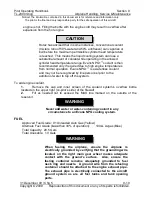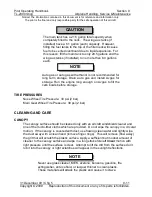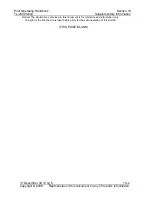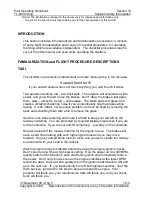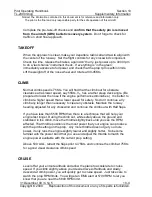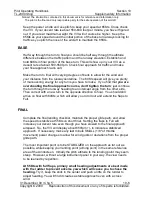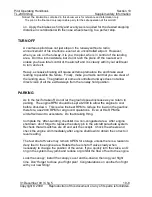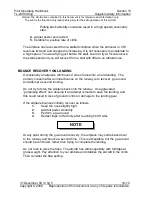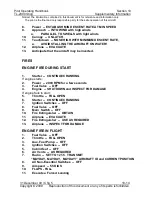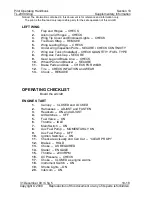
Pilot Operating Handbook
Section 10
TL-2000
Sting
Supplementary Information
Notice! The information contained in this document is for reference and information only.
The pilot is the final and only responsible party for the safe operation of this aircraft.
31 December 09 / Chg 5
10-10
Copyright © 2009 Reproduction of this document or any of its parts is forbidden.
Pulling back abruptly could also result in a (high speed) secondary
stall.
4.
Adjust power as required.
5.
Establish a positive rate of climb.
The airplane has recovered from a stalled condition when the altimeter or VSI
reverses its trend and airspeed is increasing. It is not necessary to accelerate to
a high speed. You were flying just before the stall. Learn to fly at 5 knots above
the stall speed and you will recover from a stall with little-to-no altitude loss..
BOUNCE RECOVERY ON LANDING
Occasionally an airplane will “bounce” when forced into a hard landing. The
primary concern after an initial bounce on the runway is to recover, go around,
and attempt a second landing.
Do not try to force the airplane back onto the runway. An aggravated
“porpoising effect” can develop if an attempt is made to save the landing, and
this could result in loss of ground control or damage to the landing gear.
If the airplane bounces initially, recover as follows:
1.
Keep the nose slightly high.
2.
Add full power smoothly.
3.
Perform a go-around
4.
Retract flaps to Half only after reaching 500 ft AGL
At any point during the go-around recovery, the airplane may settle back down
to the runway and bounce a second time. This is acceptable, but the go-around
should be continued, rather than trying to complete the landing.
Do not rush to raise the flaps. The aircraft has climb capability with full flaps at
gross weight. Pay attention to your attitude and stabilize the aircraft in the climb.
Then consider the flap setting.
NOTE



